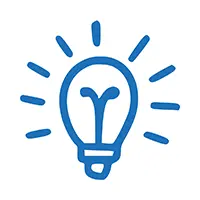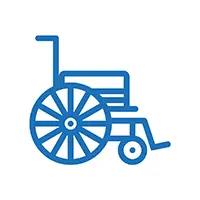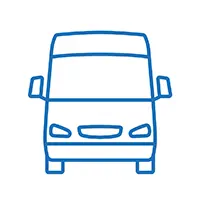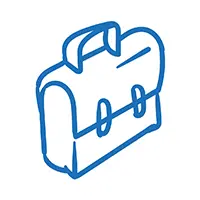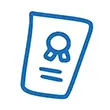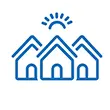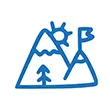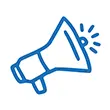Published 24 April 2019
Read the A vision loss adventure (part 1) video transcript
Read the A vision loss adventure (part 2) transcript
When Julie Woods became blind she decided it wasn't going to hold her back. She decided to say, “why not?” to whatever life threw at her.
Her resolution came to her about two years after becoming totally blind, when she was offered the chance to go cross-country skiing with a group of blind people.
“I politely declined, and I went home and I sat on the safety of my couch that night, and I thought, you stupid woman, what kind of blind person are you going to make if you turn down opportunities that come your way?
“So, I decided at that moment rather than say no, I would say why not? And I’ve said why not to walking 10 half marathons, visiting the seven wonders of the world, learning to read with my fingers, going up in a hot air balloon, going down the Shotover River in the jet [boat], doing all those things that I thought that I couldn’t.
“I’d like other people to understand that ‘no’ is the biggest barrier to you living the life that you want to live.”
Journey into blindness
Julie was born totally sighted in 1966, but her vision was fading by the time she was 18 when she was diagnosed with Stargardt disease. It’s a condition that effects the macular, the central vision.
“I began my first year at the University of Otago in the back row of the lecture theatre and ended up in the front row by the end of that year. I had trouble reading print and reading fine print, reading signs on the road, and recognising people at a distance, so that was my first dip into partial sight.”
Julie’s sight got progressively worse and she was declared legally blind at age 31. She says her sight got suddenly worse in the months leading up to that diagnosis.
“I noticed the vinyl in our bathroom was shimmering, and then that shimmer went to a blob, and to a haze and it spread to my right eye, so within three months I lost most of my remaining vision and all I could see was high contrasting shapes and moving shadows.
“I was married with my two boys, Zachary aged three and Sebastian aged one, and that’s when life really began to change. I had to learn to do things in different ways.”
Learning to do things differently
Because she could no longer rely on her sight to do things, she had to learn how to manage with her other senses.
Instructors from the Blind Foundation came to her home to teach her how to do everyday tasks in new ways.
“[They taught me] how to pour a cup of tea, and butter a piece of bread, how to answer the telephone, how to use a white cane, and to do all those daily living tasks that I had previously done as a sighted and partially sighted person.”
About a decade after becoming legally blind, Julie lost all her remaining vision in 2008.
“I was out walking one day… and I began to cross the road there and I couldn’t see the other side, which with my legal blindness I could follow the contrast in the footpaths and any markings on the road, and I remember someone offering to help me and I had trouble getting back to work and just almost instantly there was this dip in sight that left me totally blind.”
Finding belonging
Julie wrote a seven-word story about blindness. It went: Sighted, partially sighted, blind. Happy, sad, happy.
“And what I mean by that was, when I was partially sighted I had no support.
“When I had a second opinion from an ophthalmologist, my mother asked the ophthalmologist, what support services are available for Julie? And he turned to her and said, what do you want support services for?
“So that of course threw me into a no man’s land. I didn’t belong in the sighted world, and I didn’t belong in the blind world. I belonged nowhere.
“Ironically, it wasn’t until I went blind that it moved me towards a group of people who are now like me, so I met blind people who were reading with their fingers and reading with their ears. I met a blind woman who used a chainsaw. I met a blind man who mowed his lawn with one shoe on and one shoe off.
“I was meeting other blind people who were doing the things I thought I couldn’t, and for me I found that very liberating, so I was now free to be who I wanted to be, and I had the support to be who I wanted to be, and that has really made me really happy.”
The one million names in braille project
After hearing an interview with a man who was painting one million pictures to raise awareness of mental illness, Julie wondered what she could do.
“And I thought, oh, maybe I could write a million names in braille!”
The concept of writing people’s names in braille started when Julie began traveling around the world with her husband, Ron, in 2009.
Using a stylus and slate, she would write the names of their tour guides on her business card and gift it to them.
Often, they were very grateful to receive it and Julie felt moved by the connections she was building with people.
“So when I turned 20 years blind, I decided to set myself a goal of writing one million names in braille, because I thought, imagine if I could do that a million times, how cool would that be?”
She has now written the names of more than 7500 people in braille, including Neve, the daughter of Prime Minister Jacinda Ardern.
Julie sent Neve’s braille name to the Prime Minister, and Ms Ardern responded with a thank you letter written in braille.
Using blindness for good
When she became blind Julie decided she was going to use it for good.
“The first thing I did was to begin to tell my story. I began to go and speak at the Blind Foundation to donors and community groups and then just widened the net to more community groups, Rotary, Probus.
“[Eventually] l I moved into the space of speaking professionally and travelling around the country and speaking at conferences so, telling my story is one way that I’ve found has helped me interpret my life but also to inspire other people to live beyond their own limits.”
Overcoming assumptions
Julie says one of the challenges of blindness is managing people’s expectations.
“People can’t imagine what it’s like without sight, so their reaction to me without sight has been something that I’ve had to manage, and try and make them feel better about my blindness.
“Often people say, “I’m so sorry”, and it’s like, it’s ok, I’m fine, I’m happy.”
A lot of people also make assumptions about what she can and can’t do.
“People assume that I can’t cook, that I can’t choose my clothes, that I can’t put on my makeup, that I can’t operate a computer, that I can’t operate a cell phone.
“People do make a lot of assumptions, and mainly it’s around the things that we can’t do, it’s not around the things that we can do.”
Julie says challenging those expectations is something society needs to do as a whole.
“People have very low expectations of what a blind person can and can’t do, so to raise the bar in your own thinking about what a blind person can do, rather than focusing on what they can’t do.
“And that involves creating accessible world where I’m not being sent print letters by government departments, or that I have tactile warning indicators and audible signals at traffic lights, all those things that not only help me as a blind person but actually help the greater world as well.”

